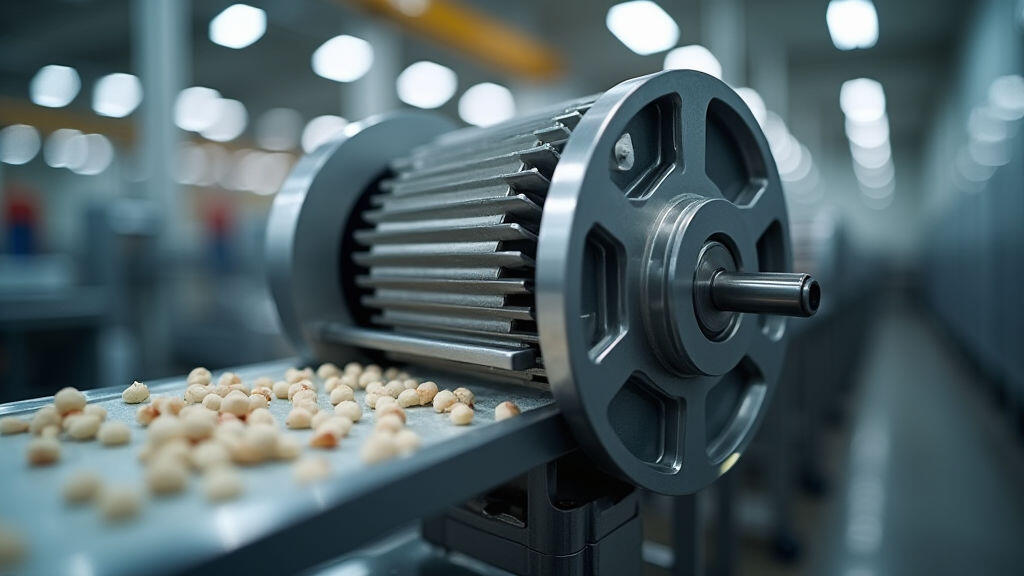Anjing Road, Xiaolan, Zhongshan, Guangdong, China
info@mes-drive.com
08.00 AM-09.00 PM

In the fast‑moving world of food production, every minute matters. From washing and blanching to mixing, separating, and packaging, the steady, reliable operation of equipment determines product quality, safety, and cost efficiency. At the heart of most machines lies the gear motor—a compact powerhouse that turns electric current into mechanical torque. Yet, not all gear motors are created equal, and the brand you choose can make a significant difference in performance, reliability, and maintenance expenses. This article explores the key factors that should guide gear motor brand selection, using real‑world examples from the food industry.
Gear motors combine an electric motor with a gearbox in a single housing, offering a ready‑to‑install solution that delivers high torque at low speeds—a perfect match for processes such as conveyor drives, screw feeders, and rotational mixers. Their compact design saves rack space, and their sealed construction protects against dust, moisture, and food particles—essential in a sanitary environment.
Beyond basic power, gear motors must satisfy stricter environmental standards: temperature ratings to handle dry heat, corrosion‑resistant materials to endure cleaning chemicals, and ISO certifications that reflect rigorous quality control. When one gear motor starts to slip or break, the entire line can halt, leading to lost product and costly downtime.
Below is a side‑by‑side comparison of three leading gear motor brands frequently used in food processing— Bosch Rexroth, King Electric Co., and Okonbi Machinery. All three offer comprehensive product lines, yet their strengths differ.
| Brand | Key Strengths | Typical Applications |
|---|---|---|
| Bosch Rexroth | Exceptional precision, robust engineering, global support | Conveyors, rotary slicers, cryogenic mixers |
| King Electric Co. | High torque at low price point, fast part ordering | Food packing machines, screw feeders, food dryers |
| Okonbi Machinery | Custom-designed gearboxes for harsh chemical exposure | Pasteurization lines, bio‑processing equipment |
In practice, a small bakery with limited capital might opt for King Electric’s cost‑effective motors, while a large, regulated plant handling dairy powder would prefer Okonbi’s corrosion‑resistant gearheads. Ultimately, matching the motor’s design intent with the process requirement is the golden rule.
SnackCo, a mid‑size snack producer, faced recurring conveyor jams that slowed production by 15 %. After diagnosing a gear motor’s wear, the engineering team swapped the existing unit for an Okonbi 400‑W, 150 Nm gear motor, certified for food contact surfaces. Within three weeks, the conveyor operated smoothly at the intended 120 rpm, and the company reported a 22 % increase in output. The operation cost diluted by the motor’s 8 % higher efficiency, while energy savings hit a 4 % reduction on the overall power bill.
Energy regulation and sustainability concerns are driving the next generation of gear motors toward greater intelligence. Smart drivers that monitor temperature, vibration, and load in real‑time can alert operators before a failure occurs. Modular gearbox kits allow quick swapping of gear ratios, enabling a single motor to drive multiple tools without extensive downtime.
Additionally, some vendors are exploring 3‑D printed gear systems, which permit lightweight, high‑strength components that can be tailored to specific fermentation or extrusion tasks. As the industry moves to more flexible, clean‑room‑grade processes, brands that embrace these technologies will likely dominate the market.
Choosing the proper gear motor brand is not merely a matter of buying a product—it is a strategic decision that shapes plant reliability, compliance, and bottom line. By systematically evaluating performance, durability, part availability, and certifications, manufacturers can secure motors that keep their lines running uninterrupted. While price remains a consideration, the long‑term value emerges from efficient, maintenance‑free operation and the confidence that your equipment meets the stringent demands of food safety and quality.
As near‑real‑time monitoring, modular design, and advanced materials propel the sector forward, investing in reputable gear motor brands will be the key to sustaining productivity and competitiveness in this rapidly evolving industry.

Leave A Reply
Your email address will not be published. Required fiels are marked